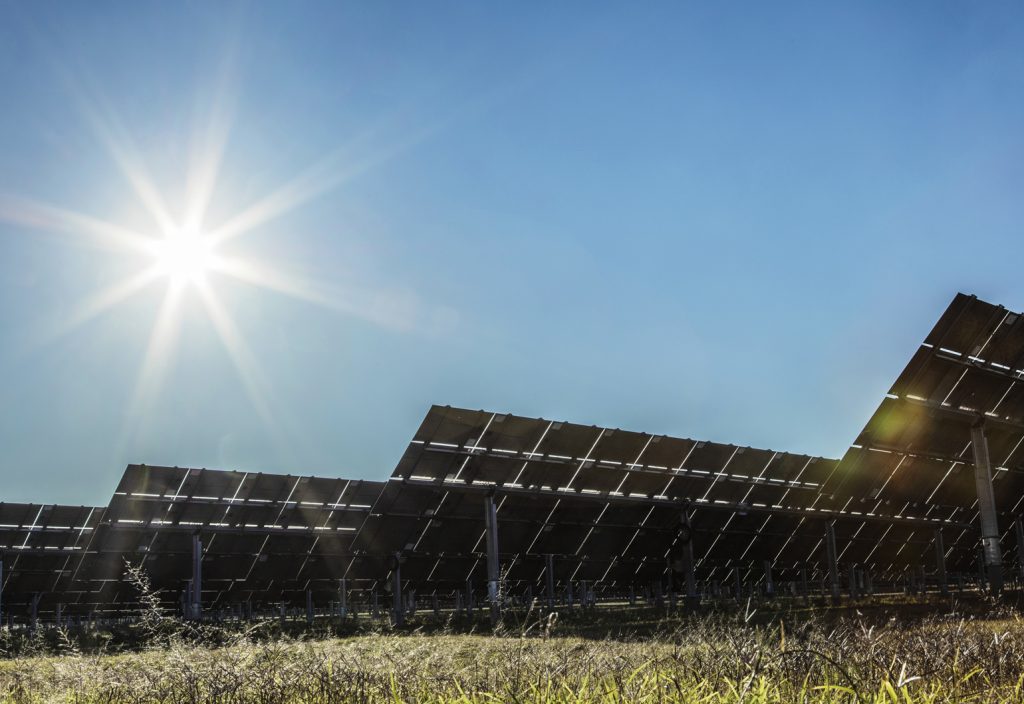In the final days of 2018, the NSW Government approved the state’s largest solar farm project to date, which is set to inject 900 MW into the grid within four years.
The Yarrabee Solar Project will be located at Yarrabee Park, 23 km from the Narrandera in the Riverina region, and built in stages. The first stage, which will deliver 300 MW, is due to start generating power in 2020.
“When built, this new solar farm will have the capacity to power a city nearly twice the size of Newcastle,” said NSW Energy Minister Don Harwin in a media release.
Harwin went on to say the Yarrabee project would increase energy capacity, contribute to a cleaner energy future for the state and provide more than 450 jobs during its construction phase.
The project will also construct a new 300 kV voltage substation that will connect the solar farm to the existing Wagga to Darlington Point high voltage transmission line.
The project website states that the completed solar farm will provide up to 2250 GWh of energy, and be capable of powering up to 315,000 homes. The project claims it will deliver carbon emission reductions equivalent to removing 540,000 cars from the roads.
Chasing the sun
Australia’s most populous state has ramped up its adoption of large-scale solar energy. In 2017, the government gave the go-ahead to 10 projects with a combined capacity of almost 1200 MW.
According to the State Department of Planning and Environment, these solar farms have the potential to reduce carbon emissions by 2.5 million tonnes, the equivalent of taking about 800,000 cars off the roads.
Last year, six solar farms were commissioned in NSW, and seven more were under construction. There are 70 more projects in the wings, which have either applied for or been granted planning approval.
Increased interest in solar power prompted the State Government to release a guideline to help plant developers and the community understand the approval process.
“The NSW Large Scale Solar Guideline provides clear guidance on the environmental and social impacts of state significant solar energy projects, encouraging early and continued consultation, and suitable site selection,” Harwin said.
Driving prices down
The growing interest in large-scale solar is not restricted to NSW. The Clean Energy Council states that although the technology accounted for just 1.8 per cent of the nation’s clean energy and 0.3 per cent of total electricity generation in 2017, the number of projects around the country is on the rise. In 2018, 24 projects were commissioned in Australia, with 60 more under construction or set to begin.
One reason is the decreasing cost of the technology. A recent report by CSIRO and the Australian Energy Market Operator (AEMO) found that solar and wind are becoming increasingly cost-competitive.
“Our data confirms that while existing fossil fuel power plants are competitive due to their sunk capital costs, solar and wind generation technologies are currently the lowest-cost ways to generate electricity for Australia, compared to any other new-build technology,” said CSIRO Chief Energy Economist Paul Graham.
Graham added that flexible technologies such as demand management, increased investment in energy storage such as batteries and pumped hydro, and gas peaker plants, might be needed if variable renewables grow to make up more than half of the power generation mix.
According to the Australian Energy Market Commission, cost savings will flow to consumers, with electricity prices forecast to drop in the coming two years due to growing investment in renewable generation and battery storage.
